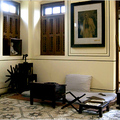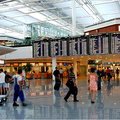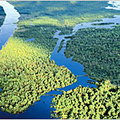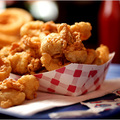RIO de JANEIRO, May 14 — When the Portuguese winemaker João Santos first viewed his company’s new vineyard in Brazil, he was crestfallen. How could he ever produce wine anywhere nearly as good as that made in Europe? The trouble was the palm trees.
“Wine and coconuts,” Mr. Santos, director of the Dão Sul vineyard, said with a chuckle in a phone interview from Fazenda Planaltino in northeastern Brazil. “One is completely different from the other. Palm trees you find by beaches. Wine comes from France, Italy, Spain, where they don’t have palm trees. Making wine here didn’t seem to make sense.”
Today, four years after Dão Sul purchased land with some grape vines in Brazil’s semi-arid desert just south of the Equator, it all makes perfect sense. Thanks to hard work, better technology and hundreds of miles of irrigation pipes snaking in from the nearby São Francisco River, Dão Sul has overcome the coconut conundrum and produced one of the most successful tropical wines yet.
In doing so it has given a new push to the growing cluster of “new latitude” wines, those produced outside the traditional geographical heartlands of wine country.
Today, producers like Dão Sul, along with beverage industry players like LVMH Moët Hennessy Louis Vuitton, Pernod Ricard and Veuve Clicquot Ponsardin, are investing in developing countries, where a growing middle class is creating more wine lovers. In doing so, these companies are challenging the centuries-old dogma that viticulture is about terroir, the belief that a wine reflects the area where its grapes were produced, and temperate climes.
“For years we have drawn two bands around the globe, roughly between latitudes 30 and 50, to denote those parts of it deemed suitable for viticulture,” Jancis Robinson, a well-known British wine expert, wrote of the new phenomenon on her Web site. “But all this is changing fast. Advances in refrigeration and irrigation techniques, not to mention much greater control over how and when vines grow, have opened up to the grapevine vast tracts of the world previously thought unsuitable for viticulture.”
Good grapes thrive in heat and sunlight, which are abundant in Brazil’s northeast. Normally such tropical climes are also wet, but the water for Dão Sul’s vines comes from the river, not from potentially devastating downpours.
The land is also flat and arid — classic terrain for palm trees. And it is a stark contrast to the rolling hills of established wine country in places like southwestern France or Napa Valley in Northern California, which are far enough above or below the Equator to be in areas that winemakers have traditionally considered optimal.
But now, adventurous winemakers are taking on nature in nations like Brazil.
A Dão Sul subsidiary, Vinibrasil, has hundreds of rows of vines. In Thailand, the Siam Winery has floating vineyards on the Chao Phraya Delta, at 13 degrees north. And even in England, longer and hotter summers have given vintners the confidence to produce a growing range of whites and spumantes.
The new latitude winemakers are still relatively unknown compared with the traditional European powers of France, Germany, Italy, Spain and Portugal, and they lag behind even the New World producers from Argentina, Australia, Chile, New Zealand, South Africa and the United States.
China and Brazil, the two biggest players among the new crop of wine-producing nations, produce just 6.7 million hectoliters, or 2.4 percent of the world’s annual output, according to figures from the International Wine and Spirit Record, a London-based research company.
Still, wine is becoming more popular in countries like Brazil, China and India because of a growing middle class and publicity about its health benefits.
Producers in all three countries are betting those markets will grow, and there are figures to back that up. The London research company estimates that by 2011, wine consumption will rise by 12 percent in Brazil, 39 percent in China and 82 percent in India.
Investors have taken notice. In addition to Dão Sul’s decision to buy into Brazil, Pernod Ricard owns brands in Brazil, Georgia and India; LVMH has invested heavily in Chandon, Brazil’s award-winning sparkling wine; and the French Champagne maker Veuve Clicquot Ponsardin is 11 years into a partnership with Grover Vineyards, one of India’s biggest producers.
“The first thing they do is establish a foothold there so they can sell to the domestic market,” said Joe W. Ciatti, the founder of the California-based Joseph W. Ciatti Company, the world’s largest wine broker. “Then they can think about exporting afterwards. Everything today is global, so the opportunities are there and the big players are not afraid. They’ll move in if the chance is there.”
Ciatti and other American producers said the new latitude producers were still so small that they had not yet registered on American radar screens. New World producers worry more about Old World producers and vice versa, Ciatti said.
The two dominate production, with 62 percent of the world’s wine coming from the big five European producers and 26 percent coming from the New World nations, according to the Paris-based International Organization of Vine and Wine.
But while the two dominant players vie for a share of a market now worth $91.6 billion, according to the organization’s figures, Vinibrasil is quietly working away in this sweltering desert south of the Equator. The company’s decision to invest in South America was a gamble based on Brazil’s long experience in grape production and winemaking.
Immigrants from Portugal in the 16th century and then later from Italy, France and Germany set up vineyards in the south of the country. Dão Sul believed it could make similarly high-quality wines, 1,200 miles to the north. In 2003, it snapped up the first part of what became an almost 5,000-acre plot along the banks of the São Francisco River. It then spent more than $4 million buying state-of-the-art machinery.
The 25 different reds, whites and spumantes it produces today account for 15 percent of the company’s output.
The decision to invest in Brazil was based on several factors, including cheap land and labor and advanced refrigeration techniques. One important advantage it shares with many new latitude producing nations is year-round sun. The region gets sunlight 12 hours a day, and in contrast to Bordeaux, which gets sunlight 12 hours a day only during the summer, there are cloudless skies here 300 days a year. Winemakers can harvest all year round, and thus sharply cut production costs.
“We have around 50 lots of four hectares each and we have grapes growing all the time," Mr. Santos said. “That means we collect grapes two or three times in January, two or three times in February, two or three times in March and so on. The cycle is continuous.”
Ms. Robinson says the new latitude wines are not a threat to the best that Bordeaux or even Northern California can offer. But she acknowledged that most of the upstart nations are at the same stage of development the French wine regions were at centuries ago. “I still find it hard to believe that new latitude wines will ever be seriously good,” Ms. Robinson wrote on her Web site. “But then that’s what was said about New World wines not that long ago.”






